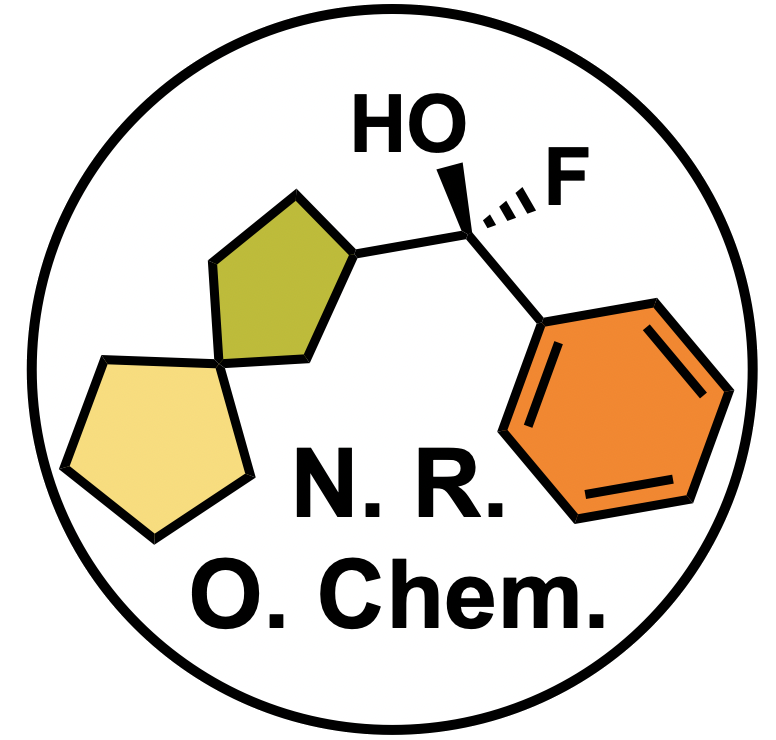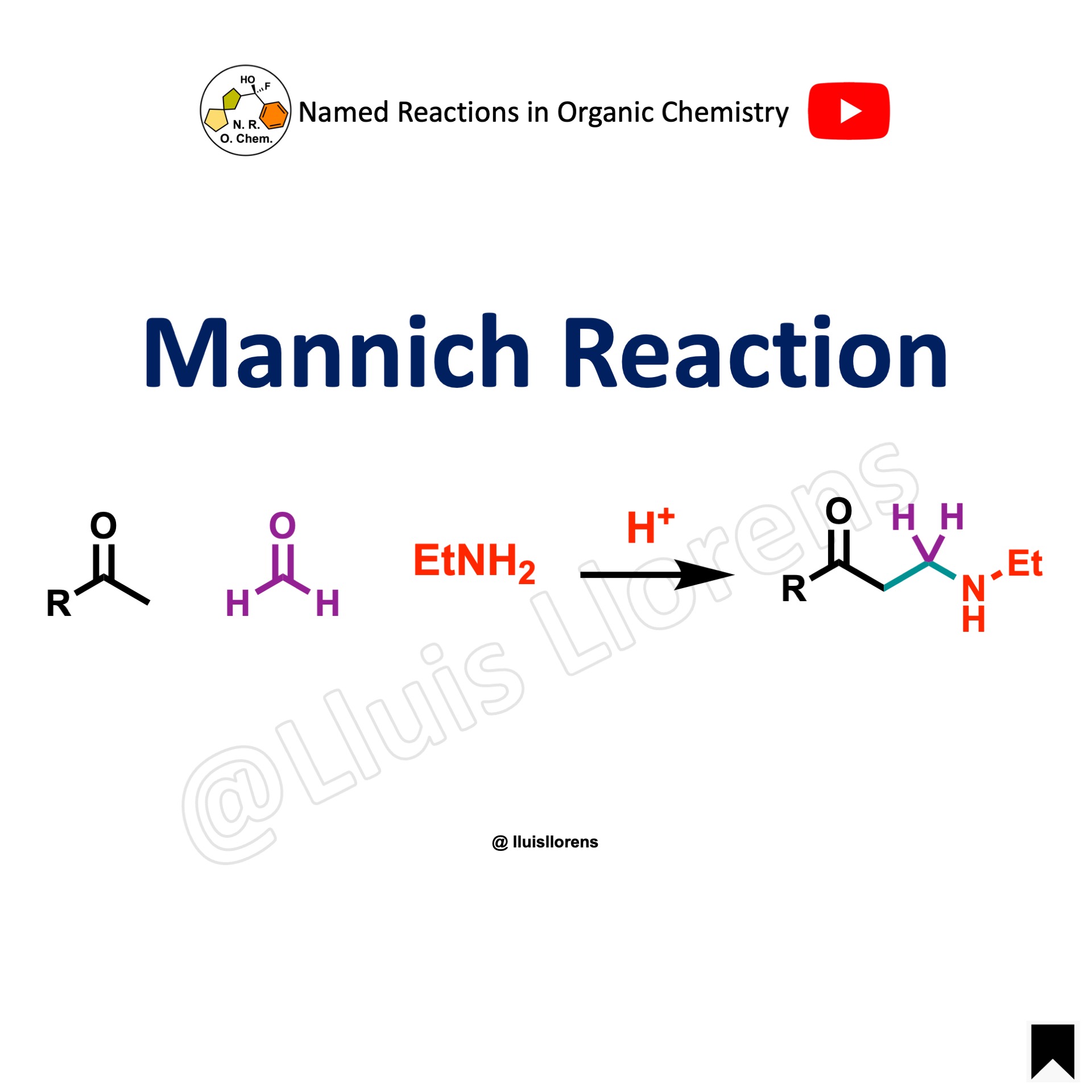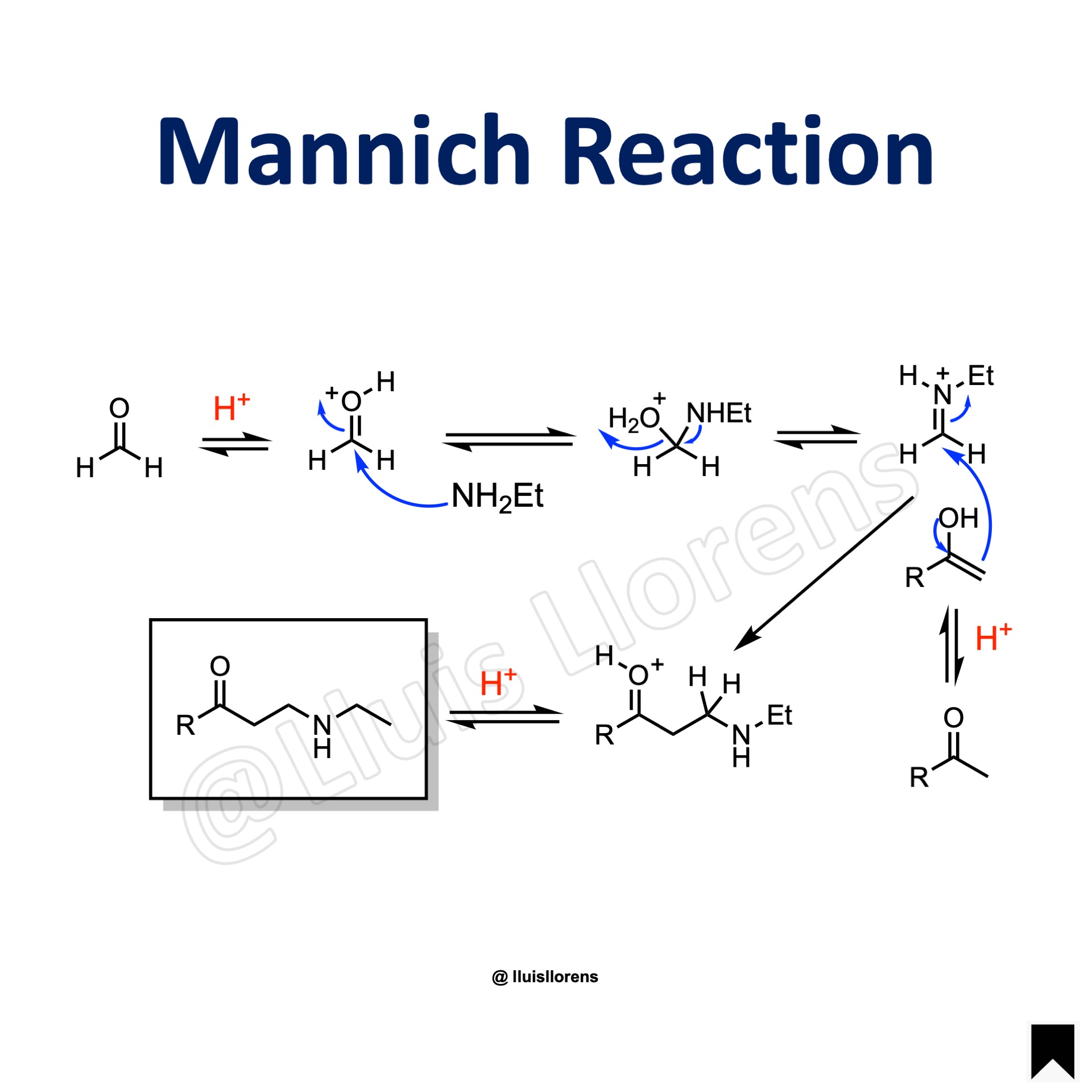Mannich Reaction
The Mannich reaction is the condensation of an aldehyde or ketone with a primary or secondary amine and a non-enolizable aldehyde or ketone to prepare aminoalkylated derivatives. Also, the addition of enolizable carbonyl compounds into iminium salts.
General features:
1. The most common amines are primary and secondary aliphatic amines or their hydrochloride salts. Aromatic amines tend not to react. 2. Formaldehyde is the most often employed non-enolizable carbonyl compound. 3. Protic solvents such as ethanol, methanol, water, or acetic acid ensure higher concentrations of the electrophilic iminium ion, leading to the aminoalkylation. 4. The use of preformed iminium salts allows faster, more regioselective, and stereoselective reactions under mild conditions.
Reaction Mechanism
1. Protonation of the oxygen of the non-enolizable carbonyl group. 2. Nucleophilic attack. Reaction with the amine component (formation of the hemiaminal) and loss of water (formation of the electrophilic iminium ion). 3. Enolization of the ketone and reaction with the iminium ion gives rise to the aminoalkylated derivative.
Experimental Procedure
The ketone (2.0 eq), formaldehyde (37% aq. solution, 430.3 mmol, 1.0 eq), dimethylamine (40% aq. solution, 1.1 eq) and DMSO (1.5 L) were added to a reaction vessel equipped with a mechanical stirrer. The resulting mixture was stirred at room temperature for 24 h. After that time, the reaction mixture was extracted three times with ethyl acetate. The organic layer was acidified (pH 2) using 2N HCl to make the hydrochloride salt that was extracted into water. Then to the aqueous layer was added 2N NaOH (up to pH 9) to make the free amine that was extracted into ethyl acetate and concentrated under reduced pressure to give the desired product (76% yield).
Learn More Named Reactions







